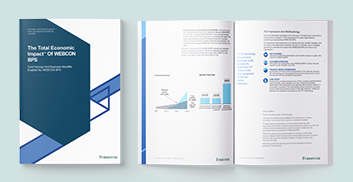A Deep Dive into RPA and BPM Tools for Business Efficiency


Introduction
In today's fast-paced business environment, where digital transformation is not just a buzzword but an operational necessity, the adoption of Robotic Process Automation (RPA) has grown exponentially. RPA, along with Business Process Management (BPM), serves as a crucial pillar of workplace automation and business efficiency, enabling organizations to automate repetitive tasks, thereby allowing their workforce to focus on more strategic, value-adding activities. It’s an essential step towards operational efficiency that modern businesses can hardly afford to ignore. But what exactly is RPA vs BPM, and how are they reshaping the business world? Let's dive in.
Understanding RPA Tools
At the most basic level, RPA tools are designed to mirror human actions and automate repetitive, rule-based tasks. Think of them as digital robots that replicate the work of a human interacting with various software applications. The use of these tools allows businesses to reduce the time spent on tedious tasks, minimize human errors and scale operations rapidly, leading to increased productivity and cost savings.These characteristics have made them integral components of digital transformation strategies.
For example, organizations can use RPA tools for tasks such as data migration, customer data management, and report generation. These capabilities offer immense value in sectors like finance, where accuracy and efficiency are critical. However, when it comes to higher-end functions like decision-making, analyzing, and reporting, a comprehensive Business Process Management (BPM) tool is more suitable. This is where a system like WEBCON BPS, with its robust analysis and reporting capabilities, comes into play.
How Does RPA Work?
There is a wide range of RPA software available on the market today, each offering unique features and capabilities. While each of these tools operates on the fundamental principle of task automation, they vary in terms of scalability, ease of use, and integration capabilities.
Most RPA tools work by interacting with systems and software in the way that is supposed to mimic a human. For instance, an RPA bot might retrieve data from your systems, perform queries, and input data into your tools – all without any human intervention.
WEBCON BPS stands as a comprehensive platform offering integrated solutions for business process management (BPM system). While it enables task automation through seamless integration with RPA tools, its main strength lies in optimizing and streamlining operations. This makes WEBCON BPS a one-stop solution for enterprises aiming for comprehensive efficiency, as it aids in both managing and improving business processes.
RPA and BPM: Understanding the Difference
In the ongoing debate of RPA vs BPM tools, they might appear similar at first glance, but they distinctly serve different purposes. RPA primarily focuses on automating single tasks, while BPM systems takes a more holistic approach, aiming to optimize entire business processes.
RPA is usually a good fit when organizations need to automate specific, rule-based, repetitive tasks, bringing immediate operational improvements. On the other hand, BPMS is more about achieving long-term efficiency and adaptability by streamlining and managing business processes.
The beauty lies in using both in synergy. For instance, you can use BPMS to understand and optimize a business process, then implement RPA to automate specific tasks within that optimized process. Platforms like WEBCON BPS facilitate the process by providing solutions that can easily integrate with RPA tools, thereby providing a balanced and comprehensive solution for both BPM and RPA requirements.
What is RPA and How Does it Work (and Why You Need a BPM System)
RPA is a form of automation of business processes. It allows to define instructions on what to do for a bot to perform. RPA streamlines single tasks and make it easier for employees to focus on more demanding tasks.
In recent years, there's been a surge in the adoption of low-code BPM systems that allow for the creation of automation workflows with minimal coding knowledge. These platforms democratize IT by empowering 'citizen developers' – employees without formal programming skills – to create and manage automated workflows.
One of the most significant advantages of low-code platforms for business process management and automation like WEBCON BPS is the speed of deployment. The drag-and-drop interfaces and pre-built templates allow for rapid prototyping and implementation. This leads to improved collaboration between IT and business teams, as both can contribute to the development process. Moreover, it increases flexibility, enabling organizations to respond quickly to changing business needs.
RPA Implementation: Best Practices and Challenges
As with any technological implementation, introducing RPA tools into an organization is not without challenges. Selecting the right tool that aligns with the business requirements is just the starting point. Thereafter, organizations face issues like managing the change process, ensuring security, and standardizing processes.
A well-planned approach to RPA implementation can go a long way in ensuring success. It’s essential to begin with processes that are most tedious and time-consuming, and then gradually expand to other areas. Proper training and support should be provided to the workforce to navigate the transition. Challenges like security concerns and process standardization should be addressed proactively, with robust policies and procedures in place.
To further understand the differences between RPA and other forms of automation, and to ensure you're choosing the right tool for your needs, check out WEBCON's resource on RPA vs Workflow Automation: What's the difference?.
The Future of RPA and BPM
As automation technologies continue to evolve, we expect to see more convergence in the sphere of RPA vs BPM, leading to even more powerful and integrated automation solutions. The future belongs to businesses that can leverage these technologies to transform their operations and drive innovation.
Conclusion
In the era of digital transformation, the strategic use of RPA tools has become very important for operational efficiency. However, if you want to reduce costs, enhance the customer experience, achieve comprehensive business optimization and remain competitive in the digital age, coupling RPA tools with a robust BPM (also known as DPA - Digital Process Automation) system like WEBCON BPS is vital. That’s why you can organize a successful and powerful digital transformation strategy. RPA alone is not enough.
As we transition towards a future where automation becomes even more central to business operations, the importance of understanding and effectively utilizing RPA and BPM tools in harmony cannot be overstated. With low-code platforms such as WEBCON BPS taking charge of business process management, the power of automation becomes accessible to every business user. It's time to embrace the future, integrate RPA with a BPM system like WEBCON BPS, and let comprehensive automation strategies drive your business to new heights.









